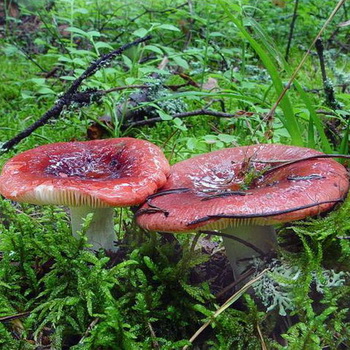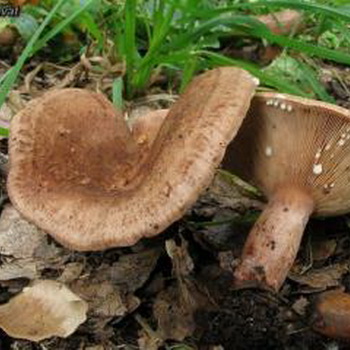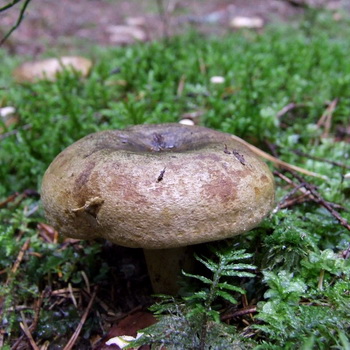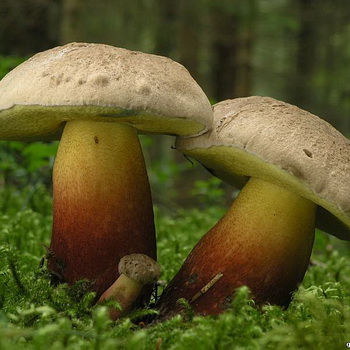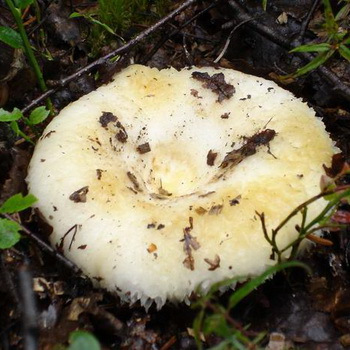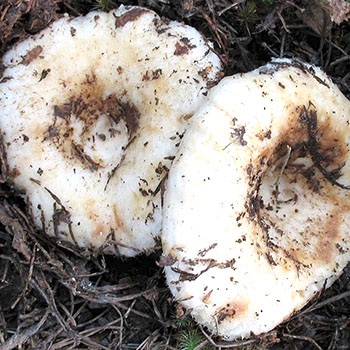Millers (Gruzdi) inedible and their types
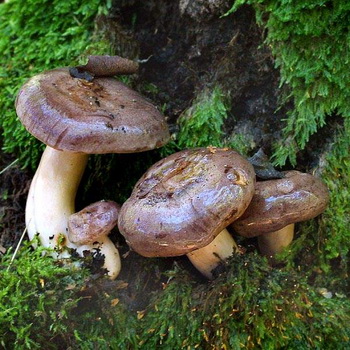
Below you can find a description of the inedible milkers of three types: prickly, sticky and hepatic. Also, photos of these mushrooms and the names of their doubles will be offered to your attention.
Milky Milk (Lactarius spinosulus)
Category: inedible.
Hat of a prickly milkman (Lactarius spinosulus) (diameter 3-8 cm): pinkish to reddish brown, maybe with small red scales. Usually either slightly convex, or almost open, it sometimes becomes depressed. The edges are uneven and wavy.
Leg (height 4-8 cm): usually curved and hollow. One color with a hat, darkens noticeably at the site of pressure or cut.
Pulp: ocher or white, in old mushrooms it may be greenish. Almost odorless, but the taste is very spicy.
Records: yellow, grow firmly to the leg.
Doubles: pink throat (Lactarius torminosus), however, it has smaller sizes and extremely fragile flesh.
When growing: from the beginning of August to the end of September in temperate countries of the Eurasian continent.
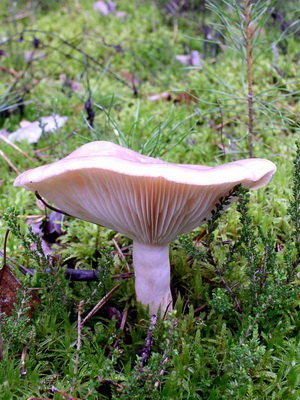
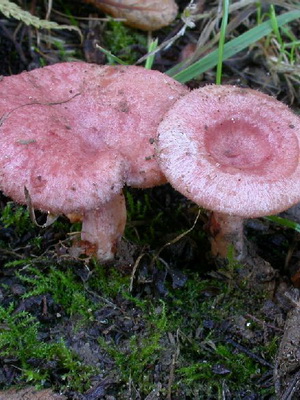
Where can I find: in moist forests of mixed and deciduous type. Prefers neighborhood with birches.
Eating: not used.
Application in traditional medicine: not applicable.
Sticky mushroom
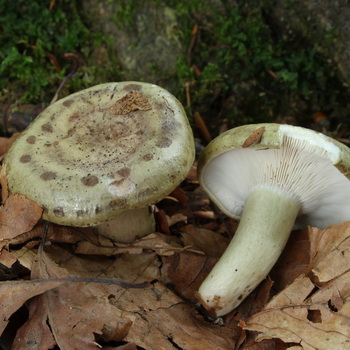 Category: inedible.
Category: inedible.
Hat sticky lactarius (Lactarius blennius) (diameter 4-11 cm): gray-green, often with dark concentrated areas. The edges are brighter than the center. The cap of the young mushroom is slightly convex, flattenes over time and even becomes slightly concave.
Leg (height 4-8 cm): slightly lighter than the cap, sticky to the touch.
Records: thin and frequent, white.
Pulp: white, brittle, without a pronounced odor, but with a strong pepper taste. The thick milky juice of the mushroom, the lactarius sticky in the sun, changes color to green or olive.
Doubles: zoned lactarius (Lactarius circellatus), which grows only under hornbeams.
When growing: from late July to mid-October in many countries of Europe and Asia.
Where can I find: only in deciduous forests near birches and beeches. It can sometimes be found on mountainous terrain.
Eating: not used.
Application in traditional medicine: not applicable.
Important! Some scientists believe that sticky milkers contain a dangerous dose of toxic substances whose properties have not been fully studied, so in no case should you eat this mushroom.
Other names: the mucosa is mucous, the lactic is gray-green, the breast is gray-green.
Inedible Liver Liver
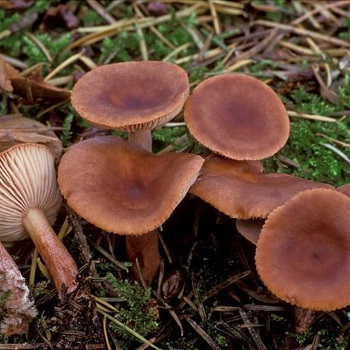 Category: inedible.
Category: inedible.
Hat of the hepatic lactarius (Lactarius hepaticus) (diameter 3-7 cm): brown, sometimes with an olive tint. Depressed or funnel shaped. Absolutely smooth, without wrinkles or scales.
Leg (height 3-6 cm): slightly lighter than a hat, cylindrical in shape.
Records: brown, buffy or pinkish in color, frequent, attached to the hat. Pulp: light brown, thin and brittle. Very caustic. Milky juice changes color in the sun from white to yellow.
Doubles:bittersweet (Lactarius rufus) and stunted lactarius (Lactarius theiogalus).The bitter milky juice does not change color, and the cap of a stunted lactic is much lighter.
When growing: from the beginning of August to the end of September.
Where can I find: on acidic and sandy soils of pine forests.
The inedible hepatic lactic is not eaten due to caustic pulp.
Application in traditional medicine: not applicable.
